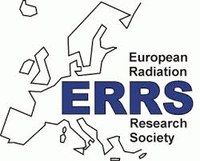NARILIS post-doc researcher Anne-Catherine Wéra wins a poster award at the European Radiation Research 2016 conference!
Anne-Catherine studies the effect of proton irradiation on A549 lung cancer cells in the presence of inhibitors of proteins involved in the DNA damage response. These radiobiological experiments are performed in collaboration with the Laboratory of Analysis by Nuclear Reaction (LARN) of Prof. Stéphane Lucas.
Early September, Anne-Catherine participated to the 42nd Annual Meeting of the European Radiation Research Society (ERR2016) in Amsterdam. On this occasion, she presented a poster entitled “Radiosensitisation of NSCLC cells to proton irradiation: Antagonist and synergistic effect of Olaparib and B02”. The excellent quality of her work was recognized by the European Radiation Research Society and the Dutch Society of Radiobiology, which selected her communication for a Poster Award!
Congratulations Anne-Catherine!
ABSTRACT
Radiosensitisation of NSCLC cells to proton irradiation using synthetic lethality
Anne-Catherine Wéra1a, Catherine Demazy1, Noëlle Ninane1, Stéphane Lucas1b, Carine Michiels1a
1Namur Research Institute for Life Sciences, UNAMUR, Rue de Bruxelles 61, 5000 Namur
aUnité de Recherche en Biologie Cellulaire
bLaboratoire d’Analyses par Réactions Nucléaires
E-mail: anne-catherine.wera@unamur.be
In this work we propose to take advantage of the synthetic lethality in order to potentiate the effect of proton irradiation on A549 non-small cell lung cancer (NSCLC) cells. For that purpose, we study, in vitro, the cell responses after proton irradiation in the presence of two different inhibitors: Olaparib, a poly(ADP-ribose) polymerase (PARP) inhibitor and B02, a RAD51 inhibitor. The cells are exposed to the inhibitor alone or in combination for a total duration of 24 hours. The highest concentrations leading to a limited toxicity for the inhibitors alone or in combination are 0.5 µM for Olaparib and 10 µM for B02. After irradiation with a 25 keV/µm broad proton beam, the survival fraction, the pADPr level and RAD51 foci formation and the γ-H2AX kinetics are determined. Finally the influence of the serum and thus of the cell cycle distribution on the survival fraction after irradiation is studied. After proton irradiation, the survival fraction at 2 Gy is 0.16 (no inhibitor), 0.10 (0.5 µM Olaparib) and 0.12 (10 µM B02). Based on the linear model fits, the sensitivity enhancement ratio obtained are 1.19 ± 0.08 and 1.17 ± 0.08 for Olaparib and B02, respectively. These values are obtained for irradiation without serum and a higher ratio is expected for proliferating cells. After 2 Gy, the pADPr level and RAD51 foci formation increase in comparison to control cells. RAD51 foci are still observed after 24 hours and the results show a significant decrease in the level of both targets when using the inhibitors. This work highlights promising alternatives for targeting cancer cells resistance to therapy while taking advantage of the ballistic of charged particles which provides accurate irradiated areas and higher radiobiological efficiency than X-rays in addition to specific targeting of DNA repair response which is altered in cancer cells.
Acknowledgments: Anne-Catherine Wéra is a beneficiary of a “MOVE-IN Louvain” Incoming Post-doctoral Fellowship, co-funded by the Marie Curie Actions of the European Commission.
 NAmur Research Institute for LIfe Sciences
NAmur Research Institute for LIfe Sciences


